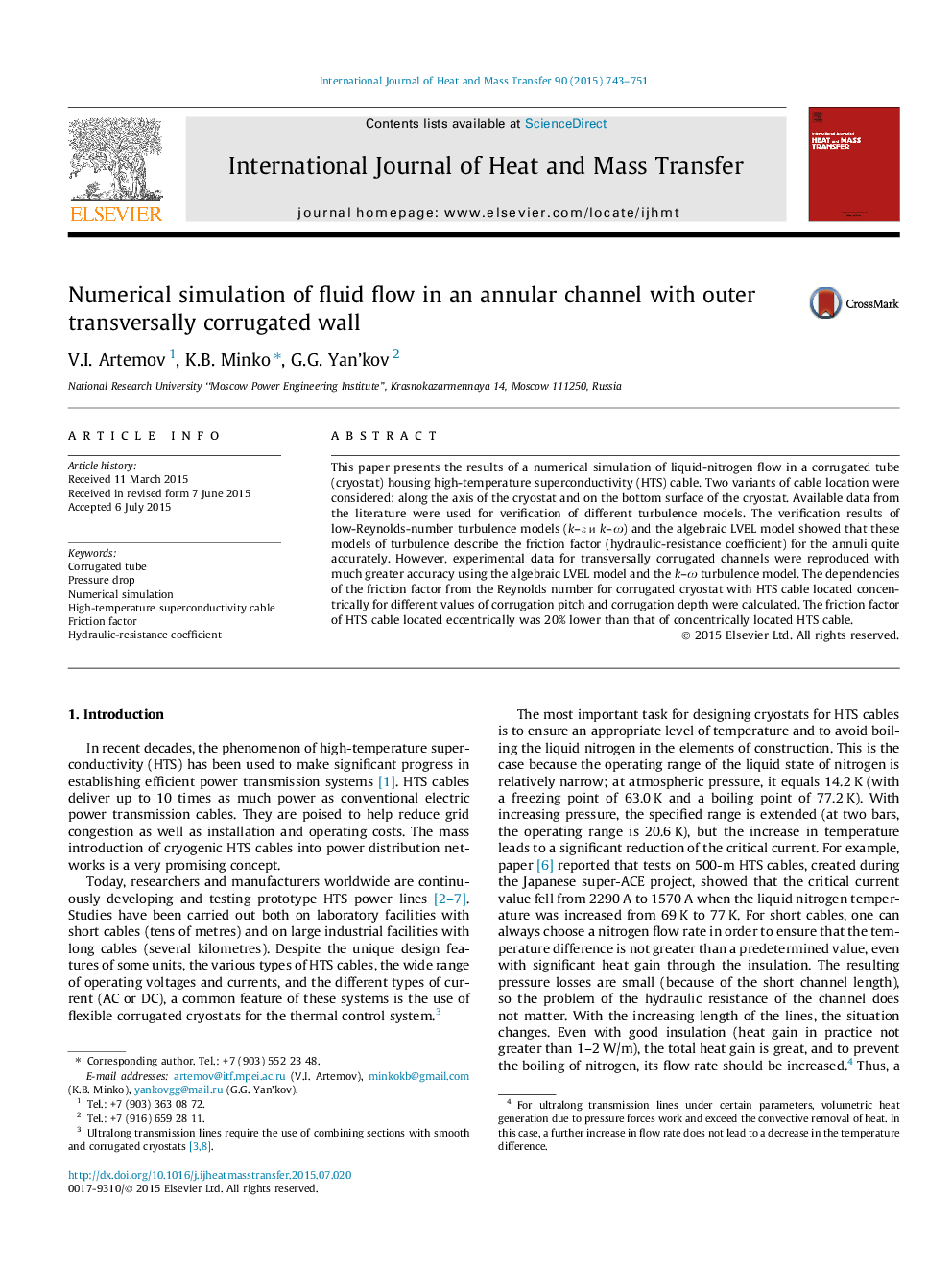| Article ID | Journal | Published Year | Pages | File Type |
|---|---|---|---|---|
| 7056532 | International Journal of Heat and Mass Transfer | 2015 | 9 Pages |
Abstract
This paper presents the results of a numerical simulation of liquid-nitrogen flow in a corrugated tube (cryostat) housing high-temperature superconductivity (HTS) cable. Two variants of cable location were considered: along the axis of the cryostat and on the bottom surface of the cryostat. Available data from the literature were used for verification of different turbulence models. The verification results of low-Reynolds-number turbulence models (k-É Ð¸ k-Ï) and the algebraic LVEL model showed that these models of turbulence describe the friction factor (hydraulic-resistance coefficient) for the annuli quite accurately. However, experimental data for transversally corrugated channels were reproduced with much greater accuracy using the algebraic LVEL model and the k-Ï turbulence model. The dependencies of the friction factor from the Reynolds number for corrugated cryostat with HTS cable located concentrically for different values of corrugation pitch and corrugation depth were calculated. The friction factor of HTS cable located eccentrically was 20% lower than that of concentrically located HTS cable.
Related Topics
Physical Sciences and Engineering
Chemical Engineering
Fluid Flow and Transfer Processes
Authors
V.I. Artemov, K.B. Minko, G.G. Yan'kov,
